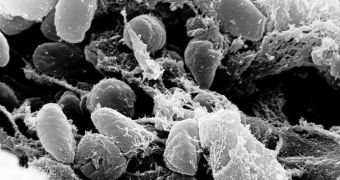According to a new series of genetic studies, it would appear that the bacterium species called Yersinia pestis came from a family tree that originated in China. The microorganisms causes the plague, a diseases that ravished Europe centuries ago.
In order to arrive at the new conclusions, researchers carried out a comprehensive study of all the genes in the bacteria, which allowed them to track its spread in the world over several millennia.
Using this method, the group determined that the organism first appeared in or around China, some 2,600 years ago, and that it slowly spread to Europe over the coming centuries.
In the mid-14th century, it struck nearly all countries on the old continent, wiping out more than a third of all people living there at the time. The event remained inscribed in history as the Black Death.
Though it may seem like a thing of the past, the bacteria is still alive to this day, constantly evolving to overcome the barriers erected by doctors, or people's immune systems, LiveScience reports.
Geneticists estimate that the latest mutation took place in the microorganism no more than 210 years ago, and this is the main reason why the bacteria could spread around the world.
At this point, it can be found on nearly all continents. Some of the countries still affected by the pestilence include the United States, Europe, South America, all nations in continental Africa, Turkey, the southeastern areas of Asia and the island of Madagascar.
The most common form of the condition is called the bubonic plague, and it has been demonstrated to spread by using flies and rats as a means of transport. It most likely arrived in Europe or Russia aboard merchant ships, historians believe.
The World Health Organization (WHO) estimated that roughly 60 percent of people can be fatally affected by Y. pestis infections. In modern times, healthcare experts have developed some treatments against the bacteria, but the disease they cause still claims many lives.
Using the new genetic family tree, researchers hope to get some insight into how the bacteria and the disease it causes will evolve. The study was conducted by researchers at the University of Maryland School of Medicine (UMSM) Institute for Genomic Sciences.
Leading the team was researcher Mark Eppinger, who is also the coauthor of a research paper accompanying the study. The work appear is published online in the October 31 issue of the top journal Nature Genetics.

 14 DAY TRIAL //
14 DAY TRIAL //